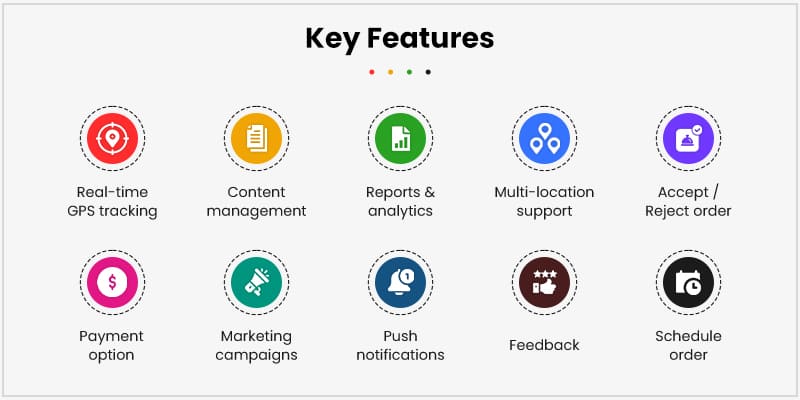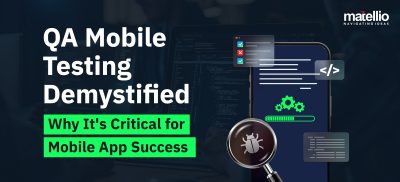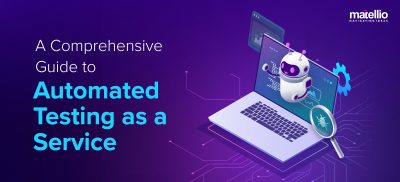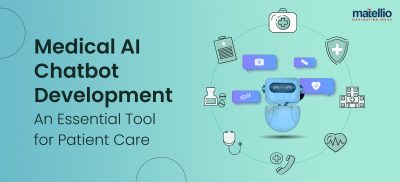
We all live in a time that has been heavily digitalized. The effect of digitalization on the flow of money and business processes in all industries, including the restaurant industry, is escalating. In 2022, restaurant management and ordering systems for restaurants will be at an all-time high.
Nowadays, restaurant businesses are struggling to meet the demand created by the COVID-19 epidemic while exceeding their targets in the months ahead, and industry growth looks set to continue to grow. Restaurant management solutions are in high demand due to technological disruption in the industry. You can use an restaurant management and ordering system for restaurants to help you launch a successful restaurant business.
If you want to get into this field, the Lunchbox, an online ordering and management system for restaurants, is a great place to start studying and figuring out what makes a these solutions effective.
In this blog, we’ll look at an overview of the lunchbox, why you should invest in an online ordering and management system for restaurants, and how to build your restaurant management platform like Lunchbox.
Why Invest in a Restaurant Management Platform?
Over the last five years, the food delivery sector has grown significantly. According to Introspective market research, the global online restaurant management platform market is expected to develop at a CAGR of 15.4 percent from an anticipated USD 23,539.40 million to $99,725.97 million by 2026.
Market stats are enough to state the popularity of online restaurant management platforms! But, below are some more reasons to invest in developing a restaurant management platform like Lunchbox!
What is Lunchbox ?
Lunchbox is an online ordering system and restaurant management platform for restaurants that allows restaurants, cafe outlets, and food chains of all sizes to automate activities such as online ordering, marketing, and loyalty. Lunchbox provides restaurant businesses with a cutting-edge restaurant management platform that boosts sales and interaction with powerful growth marketing tools, allowing them to build closer relationships with their customers.
Lunchbox, is a all in one restaurant management platform for restaurants, comes with various models, which you can also include in your custom restaurant management platform like Lunchbox.
Lunchbox modules
- Ordering
- Marketing
- Loyalty
Let’s discuss each module in detail!
Ordering
Restaurants can use this module to greatly increase their ordering potential and make it simple for customers to receive exactly whatever they want repetitively.
You can also add various functionalities in order to make this module more helpful. Some of the key features are:
- Single platform – With this feature, you can set up the online ordering to fulfill web orders, app orders, catering orders, and more from a single platform. Customers will indeed be more likely to order from your restaurant if you have a straightforward and integrated online platform, which will help you establish client loyalty.
- Kiosks – A new way for your customers to order their cuisine quickly and easily. To get the restaurant’s menu on their phone, the customer must scan the code.
- Subscriptions – Customers that place many orders for the same item would appreciate this service. With this feature, they can quickly order and get some exciting discounts.
Read more: Benefits of Pay at Table Solutions for Business
Marketing
This module gives you easier access to customer information, which is crucial for your marketing initiatives. This will enable you to gain a better understanding of their consumers’ spending habits as well as acquire data for menu innovation and customer experience improvements. You were also able to concentrate solely on re-educating customers via the app. Customers, for one, received tailored offers and were able to participate in marketing campaigns.
You can also add various functionalities in order to make this module more helpful. Some of the key features are:
- Email – Restaurants benefit from personalized service because it helps customers feel valued. Make an upsell by sending a tailored message to the customer via social media or email. Inquire about their experience with a certain order, and invite them to try something new from your offerings.
- Notifications – This functionality allows you to immediately communicate branding updates to your customers.
- Social integration – Retarget customers on social media to reach a larger audience. Use Google to match online ordering tags and boost SEO, and use Facebook for campaigns and promotion, as well as other social media sites for other marketing initiatives.
- Analytics – Customers receive targeted, location-specific notifications from restaurant owners. This feature allows you to see how effective your marketing messages were, how many people interacted with your campaigns, and what sales were influenced by push notifications.
Loyalty
Customer happiness is extremely crucial for any restaurant’s profitability: it is a key factor in determining success. Most fast-food restaurants, on the other hand, struggle to maintain a dedicated customer base. Increased customer happiness can lead to increased loyalty, which is advantageous because recruiting new customers might cost five times more than existing ones. With this module, you may provide food perks, cash perks, and any other rewards you can honestly believe in to keep your customers coming back.
You can also add various functionalities in order to make this module more helpful. Some of the key features are:
- Reward program – Offering rewards programs is a great way to thank your valuable customer – they get earned points among each order, which they can redeem for special discounts and other rewards.
- In-store awards – With this feature, you may surprise and amaze customers when they’re dining in. This functionality allows them to earn and redeem points through an app-only experience.
Read More: Custom Loyalty App Development
Top Benefits of Restaurant Management Platform
There are immense benefits of restaurant management platforms like Lunchbox for restaurants and business owners. Below are a few of them,
Boost customer experience
Easy and hassle-free food ordering is provided via solution, resulting in a good customer experience. Customers no longer need to wait in restaurants or stand in long lines to place orders; instead, they can use a single solution. Customers can order their favorite meal from the restaurant using an online restaurant management platform and take advantage of its specials, deals, and other incentives. It offers consumers a great deal of flexibility.
More options for consumers
Encourage consumers to order from home using an easy-to-use online ordering system for restaurants like a lunchbox, which delivers the convenience that most customers seek and allows them to try new things and add items to their meal order that they might not have ordered if they were dining in. This is also another significant benefit of using a restaurant management platform for your restaurant business.
Boost sales
Notifications are really important in terms of marketing. If you send push notifications to your customers in advance, advising them of discounts and their validity, you will see a significant rise in sales during the week and at weekends.
For example, if a customer receives text messages on their phone offering lunch and dinner specials, they are far more likely to order food using your platform.
Automation
You may entirely automate your normal ordering procedures with an restaurant management platform. Furthermore, because they will not be distracted by ringing phones, processing orders, or collecting payment information, your employees will be able to spend more time with clients/customers.
Key Features That Make a Restaurant Management Platform

If you want to build a restaurant management platform like Lunchbox, your solution should include the features below.
Real-time GPS tracking
Real-time GPS, which enables users to track the location of their meal, is one of the most popular features of online food ordering apps. The primary purpose of GPS is to enable two-way tracking and functionality. It aids in determining the user’s location in order to deliver food. After the region has been confirmed, users may easily track the movement and progress.
Content management
Restaurant owners must’ve been able to add content to the platform in order to entice more guests. They should be able to manage or change the restaurant’s essential information whenever they wish. The name of the restaurant, contact information, location, opening and closing hours, images, menus, descriptions, delivery charges, and prices are some of the things they can add or change.
Reports & analytics
By creating reports from the applications, analytics handles the actionable intelligence and metrics of the bookings. On a nearly weekly basis, the profit and loss of all of the restaurant are examined. This is specifically developed to calculate overall revenue generated as well as profit.
Read More: AI in Retail
Multi-location support
Restaurants with several branches can design unique menus and ordering systems for each location, all of which are available from the same app or website. Customers may easily locate the appropriate area to place their orders, and items are delivered to the appropriate location.
Accept/Reject order
It is an essential feature that allows the restaurant executive to refuse orders in the time of an emergency or during a closing time.
Payment option
It is critical to provide your users with a variety of payment options. Debit cards, digital wallets, credit cards are just a few of the payment alternatives available.
Marketing campaigns
This function aids in the development of your brand, the acquisition of new customers, and the maintenance of existing customer relationships. A marketing campaign can help you promote your business and engage with customers by reaching out to the proper demographic. The CRM module can assist you in connecting with existing clients and automating tasks related to them.
Push notifications
Attempt to apply push notifications in such a way that they aid in the considerable growth of your business application. You can send out notifications to your users regarding loyalty schemes, new promotions, and restaurant offers on a regular basis to keep their attention.
Feedback
Getting input from consumers is the simplest and most effective technique to learn how to enhance your application. To stay current in the market, it’s also critical to review and bring out significant features in your app on a regular basis.
Schedule order
One of the standout advantages of your online food ordering solution is the ability to schedule orders. This will be useful for individuals who wish to save time and avoid wasting it by ordering the very same food over and over again. This function will assist you in expanding your business. At the same time, it will improve your business’s retention rate.
How to Develop a Food Ordering and Restaurant Management Solution Like Lunchbox?
At first glance, developing an online ordering system for restaurants like Lunchbox may appear to be a fantastic idea. The key to developing a successful solution is to create a one-of-a-kind solution that solves the issues of the target audience.
In this part of the blog post, we’ll go over how to develop an online ordering system for restaurants like Lunchbox that has a better chance of succeeding.
Do market research
The first stage in developing a ordering and management solution is to conduct market research. You can’t make any decisions unless you know what you’re getting into, such as your competition, market state, target audience, and so on. Market research will assist you in determining how to succeed in the industry:
- Choose the market in which you wish to launch the solution
- Determine who your key competitors are and examine their strengths and weaknesses
- Come up with suggestions for how to improve your solution.
- Find out who your key group is and what they’re looking for.
To evaluate how your target audience will react to your idea, put it to the test. You need to improve and add something unique and new in order to outperform your opponents. The best move you can indeed make is to become well-versed in current market changes.
Build design
The solution’s design, also known as the prototype or mock-up, is yet another component of your task. This is a visual picture of how your application will appear on a user’s screen. You should emphasize connections between screens in a mock-up. Mock-up design can be a time-consuming process. We advocate delegating this process to competent UI/UX experts to save time and money for business development activities. These experts could:
- Make a suggestion for the best user-friendly color palette for your solution
- Create design elements that are simple and minimalistic
- Make recommendations for the best UX design
The solution’s prototype offers more than just a pretty visual. It’s also about having a well-considered logic. Involve a skilled business analyst in the process to ensure that everything is done correctly and that your app appeals to a specific user demographic.
Check latest trends
In the online food ordering solution industry, there is fierce competition. You need to improve something unique and new in order to outperform your opponents. The best move you can make is to become well-versed in current market changes. Artificial intelligence, chatbots, cloud kitchens, social media, and other cutting-edge trends that you must not miss.
Hire the right team of developers
Now comes the most crucial part. The rest of the development will be handled by a professional team of developers. A scalable and efficient online restaurant management and ordering solutions like Lunchbox will be delivered by an agile team of specialists with expertise in numerous technologies.
For a custom solution, you can select a company which provides staff augmentation services for development. This will help you save costs over traditional inhouse hiring and developing concept and save time on management and other operations.
The following roles are required in your food delivery solution development:
- UI/UX designers
- QA testers
- Project manager
- Business analyst
Build MVP
The MVP is a functional product that has all of the necessary functionality for the food delivery app to function. It consists solely of essential functions to meet user needs and does not include any other offerings. An MVP is a simple-to-use offering with a simple design. This ensures you’re not utilizing all of your resources in one go and that you’re deploying them appropriately to indeed get the best return on investment. You’ll be able to deploy a smooth application with few features in the quickest amount of time if you use an MVP methodology. The developers will be able to complete it more quickly. It will enable you to swiftly gather customer feedback and re-release the app with a more precise value proposition.
How Much Will It Cost to Build an Restaurant Management and Food Ordering Solution Like Lunchbox?
You might be curious as to how much such an online solution like Lunchbox will cost. Well, the cost to develop a solution like a Lunchbox depends on various factors like:
- Complexity
- Features & functionalities included
- Geolocation of hired development company
- Technologies used
- Platform
Apart from these, there are many other factors that affect the development cost. If you want an in-depth quotation for solution development like Lunchbox, then share your requirements with us; we would love to assist you.
Conclusion
We hope you now understand how to develop an online ordering system for restaurants like Lunchbox. Find a trustworthy retail software development company that will assist you along the way, properly establishing your USP, and putting up with a unique solution idea are the primary secrets to the success of the entire process. To build a restaurant management and food ordering solution from the ground up, you’ll need Matellio developers with specific experience building food ordering solutions like Lunchbox.




